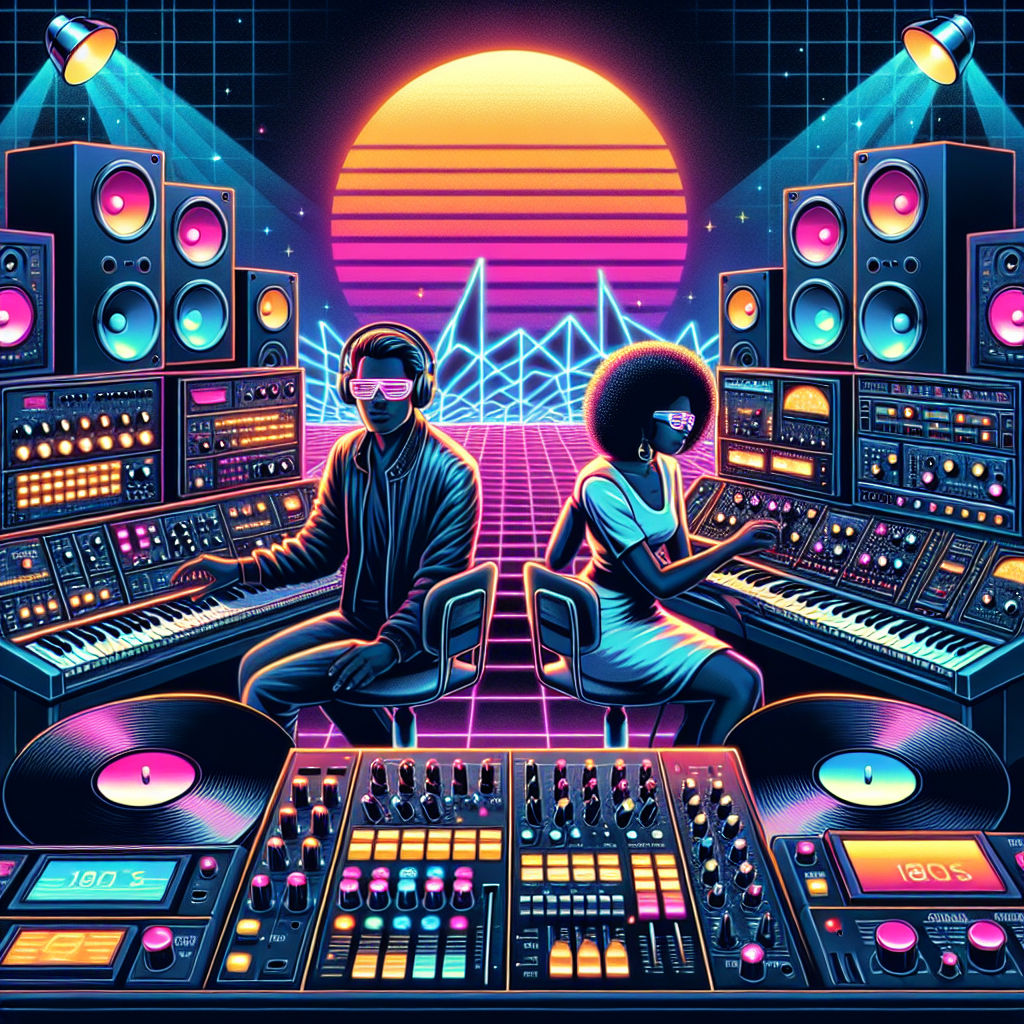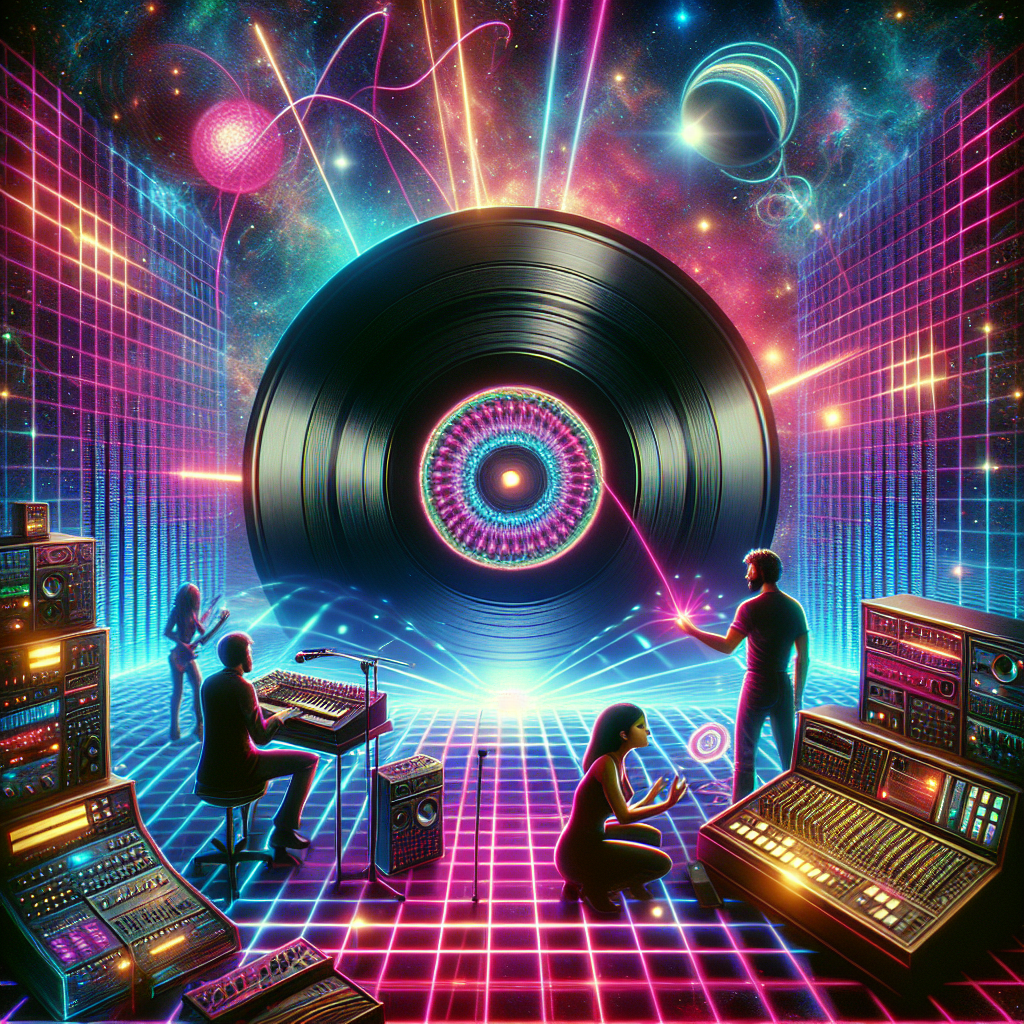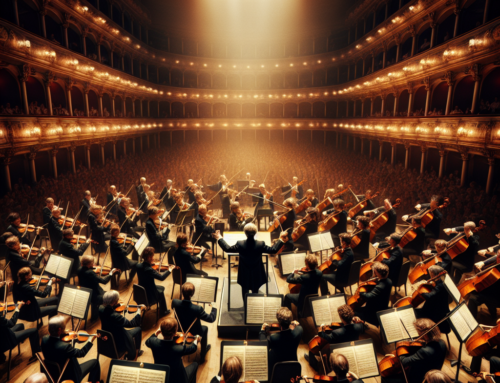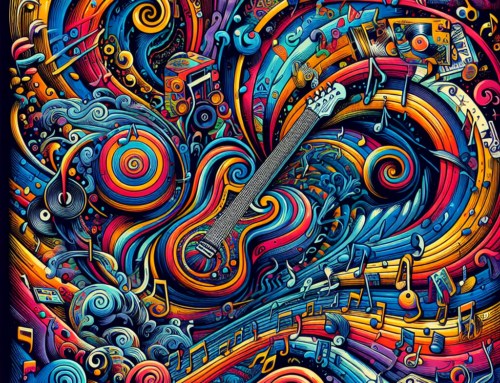“Retro Beats, Modern Streets: The 80s Synthwave Revival Reshapes Today’s Music Scene”
Introduction
The 80s synthwave revival is a vibrant and influential movement in contemporary music, characterized by its nostalgic embrace of 1980s aesthetics and sounds. This genre, which began gaining momentum in the early 2000s, draws heavily from the synthesizer-heavy music of the 1980s, including pop, film soundtracks, and video game music. Artists within the synthwave movement are not only recreating the sonic textures and visual styles of the past but are also innovating and influencing a wide range of modern music genres. From pop to electronic music, the synthwave revival has introduced a new generation to the rich, electronic sounds of the 80s, while also impacting the production techniques and aesthetic choices of contemporary artists. This resurgence has led to a unique fusion of old and new, where vintage synthesizers and modern digital production coalesce to create a fresh yet familiar sound that resonates with a broad audience.
Influence Of 80s Synthwave On Modern Pop And Electronic Music Production
The 1980s was a decade of bold style, colors, and sounds, particularly in its music. Synth-heavy tunes defined a generation, and now, decades later, we’re witnessing a powerful resurgence of this vibrant era. The 80s synthwave revival is not just a nostalgia trip, but a dynamic influence on contemporary music, shaping the sounds of modern pop and electronic music in profound ways.
Synthwave, characterized by its analog synthesizer rhythms and retro-futuristic edge, began as a genre deeply rooted in the 1980s aesthetic, echoing the sounds of that time but with a modern twist. Artists like Kavinsky, Carpenter Brut, and Perturbator have led the charge in the revival, bringing the classic synth sounds back to the forefront of music. This revival has not only captivated older generations who experienced the 80s firsthand but has also enchanted younger audiences who might be hearing these types of sounds for the first time.
The influence of 80s synthwave on modern music is evident across various aspects of production and style. Today’s pop music, for instance, has seen a significant infusion of synthwave’s stylistic elements. The lush, electronic soundscapes that were once staple sounds of the 80s are now prevalent in the work of contemporary artists. For example, The Weeknd’s hit single “Blinding Lights” showcases a synth-heavy sound that harks back to the 80s era while seamlessly integrating modern pop elements, creating a sound that is both nostalgic and fresh.
Moreover, the impact of synthwave extends beyond pop and into broader electronic music. Modern electronic music producers are increasingly drawing on the genre’s emphasis on mood and atmosphere, using vintage synthesizer sounds to create rich, immersive experiences. This blending of old and new synthesizer technologies has given rise to a unique hybrid form of music that respects its roots while pushing the boundaries of what electronic music can be.
The aesthetic appeal of synthwave has also played a significant role in its influence. The visual component of synthwave is heavily inspired by 80s graphics and cinema, which complements the audio experience with a nostalgic yet futuristic vibe. This has made the genre particularly appealing to filmmakers and video game developers, looking to evoke or enhance specific moods and settings. Consequently, synthwave has become a popular choice for soundtracks in various media, further cementing its impact on contemporary culture.
As we look to the future, the 80s synthwave revival shows no signs of slowing down. Its ability to adapt and meld with contemporary music trends suggests that it will continue to evolve and inspire new generations of musicians and producers. The revival is more than just a fleeting trend; it is a powerful movement that has rejuvenated the music scene with its distinctive style and sound.
In conclusion, the 80s synthwave revival is a testament to the enduring appeal of the decade’s music and its capacity to influence and inspire today’s musical landscape. By blending the old with the new, it has created a sound that feels timeless—a bridge between past and present that resonates with a wide audience. Its impact on modern pop and electronic music production is profound, proving that sometimes looking back is the best way to move forward.
Iconic 80s Synth Sounds In Today’s Top Chart Hits

The 1980s was a decade of bold style, colors, and sounds. Particularly notable was the emergence of synthwave, a genre of music that has recently seen a revival, influencing many of today’s top chart hits. This resurgence is not just a fleeting nostalgia but a robust integration of the past into the modern music landscape, proving that what was old can be new again, and sometimes even better.
Synthwave, characterized by its analog synthesized melodies and retro-futuristic edge, has been making a remarkable comeback. Artists and producers from various genres are incorporating classic 80s synth sounds into their music, creating a blend that feels both fresh and familiar. This fusion is more than just a trend; it’s a creative exploration that pays homage to the sonic pioneers of the past while pushing the boundaries of contemporary music.
The influence of 80s synth can be heard across a spectrum of today’s music genres. From pop to hip-hop, and even R&B, the textural richness of synthesized music is unmistakable. Take, for example, the work of artists like The Weeknd, whose hit single “Blinding Lights” echoes the cinematic vibe of 80s synth-pop. The track not only topped charts around the world but also set a record for the longest time spent in the top five of the Billboard Hot 100. Its success is a testament to the enduring appeal of the synth sound that once dominated the airwaves several decades ago.
Moreover, the integration of these vintage sounds goes beyond mere replication. Modern artists are innovating, using technology that wasn’t available in the 80s to push the music to new heights. They blend digital and analog tools to create layers of sound that are intricate and engaging. This approach not only revitalizes the music but also expands the audience, attracting both those who lived through the original era and younger listeners experiencing it for the first time.
The revival has also been bolstered by the visual aesthetics associated with synthwave, often seen in music videos and album covers, which feature neon-rich colors and futuristic themes. This visual branding helps reinforce the connection between the sound and its cultural roots, creating a complete package that resonates on multiple sensory levels.
Furthermore, the influence of 80s synth has permeated into film and television scores, video games, and even advertising, demonstrating its versatility and widespread appeal. Composers like John Carpenter, who pioneered the use of synthesized sound in filmmaking, have inspired a whole new generation to explore and experiment with these textures.
This blending of old and new is a beautiful reminder of music’s cyclical nature. Just as the 80s artists were influenced by their predecessors, today’s musicians draw from their digital and analog forebears, creating something entirely unique. This ongoing dialogue between past and present in music is not just about revival; it’s about reinvention and evolution.
As we continue to witness this resurgence, it’s clear that the synthwave revival is more than just a passing fad. It’s a vibrant, living tribute to the sounds of the 80s, reimagined for a new era. With each chord and chorus, contemporary artists are writing the next chapter in the history of music, proving that the spirit of innovation is alive and well. As this trend continues to unfold, it will undoubtedly keep influencing the music industry in novel and exciting ways, ensuring that the legacy of the 80s continues to pulse through the heart of modern music.
The Role Of Nostalgia In The Resurgence Of Synthwave Music
The 80s Synthwave Revival is Making Its Mark on Contemporary Music
In recent years, the unmistakable sounds of the 1980s—synthesizers, drum machines, and neon-tinted nostalgia—have made a remarkable resurgence in the music industry. This revival, known as synthwave, is not just a fleeting trend but a powerful movement that has been steadily influencing contemporary music. The role of nostalgia in this resurgence is particularly significant, as it taps into a collective yearning for the past, yet reinterprets it with a modern twist that appeals to both old and new generations.
Nostalgia, by its very nature, evokes a sentimental longing for the past. For many, the 1980s represent a time of musical innovation and exploration, characterized by the rise of electronic music and the birth of digital synthesizers. The era was marked by iconic sounds from bands like Depeche Mode, The Human League, and films that featured compelling electronic scores, such as “Blade Runner” and “Tron.” These influences are deeply embedded in the synthwave genre, which meticulously recreates and modernizes the sounds of the past.
However, the appeal of synthwave goes beyond mere imitation. Artists within the genre are not just replicating the sounds of the 80s but are also reimagining them, creating something entirely new and exciting. This blend of old and new is what makes synthwave uniquely positioned in the contemporary music scene. It offers a bridge between generations, providing a musical experience that resonates with those who lived through the original era and those who wish they had.
Moreover, the resurgence of synthwave can also be attributed to the way it complements the visual aesthetics of the 80s. The vibrant colors, retro-futuristic imagery, and overall visual style play a crucial role in the total experience of the music. This is evident in music videos, album covers, and live performances, which often feature visuals that are as meticulously crafted as the music itself. The visual component not only enhances the auditory experience but also solidifies the nostalgic appeal, creating a holistic sensory experience that is both immersive and evocative.
The impact of synthwave on contemporary music is also evident in its crossover with various musical styles and its influence on mainstream artists. Elements of synthwave can be heard in the works of pop, rock, and even hip-hop artists, who incorporate its distinctive sounds to add a touch of nostalgia or futurism to their music. This crossover appeal demonstrates the genre’s versatility and its ability to adapt and thrive within the broader musical landscape.
In conclusion, the resurgence of synthwave is a testament to the enduring appeal of the 1980s music and aesthetics, reinterpreted through a contemporary lens. The role of nostalgia is pivotal, as it not only invokes a longing for the past but also celebrates it in a way that is accessible and relevant to today’s audience. As synthwave continues to evolve and influence the music industry, it stands as a vibrant example of how the past and present can converge in beautiful and innovative ways. This revival is not just about looking back; it’s about moving forward with a sense of appreciation for the sounds that shaped a generation.




